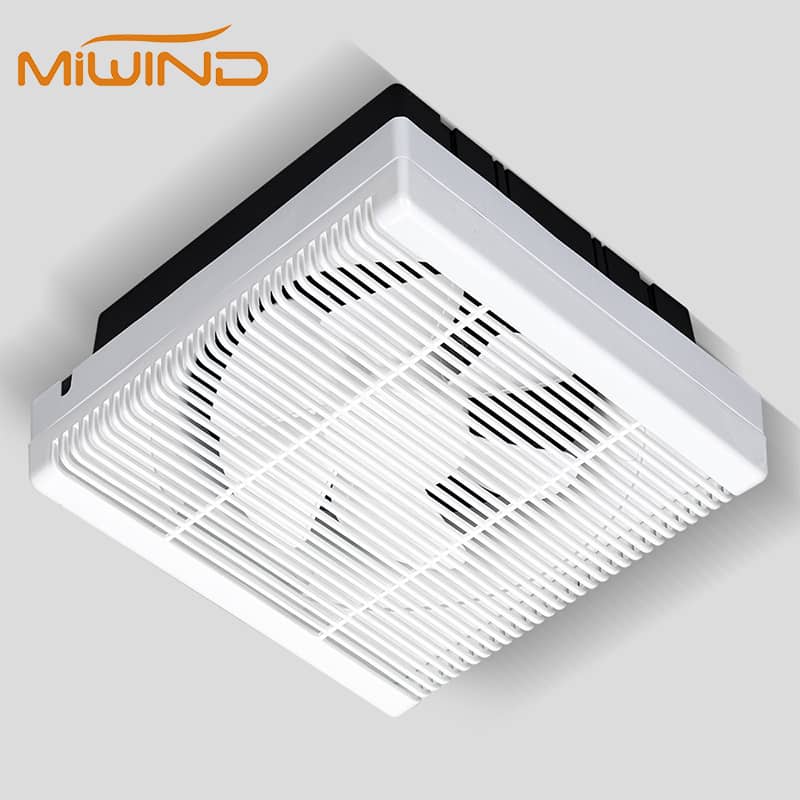
In recent years, the importance of indoor air quality has become increasingly evident, particularly in residential, commercial, and industrial settings. Poor ventilation can lead to a buildup of pollutants, moisture, and heat, which not only compromise health but also affect productivity and comfort. Exhaust fans have emerged as a crucial component in addressing these challenges by enhancing air quality and efficiency. This article delves into the role of exhaust fans in revolutionizing ventilation, exploring their mechanisms, benefits, and applications across various environments.
Exhaust fans are designed to remove stale, polluted, or humid air from indoor spaces and replace it with fresh air from the outside. Their operation is based on creating a pressure difference that pulls air out of the room, allowing fresh air to enter through other openings. This simple yet effective mechanism makes them indispensable for maintaining healthy indoor environments.
The working principle of an exhaust fan involves several key components:
Motor Activation: The motor powers the fan blades, initiating the airflow process.
Air Suction: As the blades rotate, they create a vacuum-like effect, pulling stale air towards the fan.
Air Expulsion: The stale air is expelled outside through a vent or duct.
Fresh Air Inflow: The negative pressure created by the fan draws in fresh air from outside to replace the expelled air.
Exhaust fans significantly enhance indoor air quality by removing pollutants, allergens, and odors. This is particularly important in areas prone to moisture accumulation, such as bathrooms and kitchens, where mold and mildew can thrive. By expelling humid air, these fans prevent the growth of mold and mildew, ensuring a healthier environment.
Exhaust fans play a crucial role in regulating indoor temperatures. They remove hot air, allowing cooler air to flow in, which is especially beneficial in kitchens where cooking activities generate significant heat. This temperature control not only enhances comfort but also reduces the reliance on air conditioning systems, potentially lowering energy costs.
Excess moisture can lead to structural damage and product spoilage. Exhaust fans help maintain optimal humidity levels by expelling humid air, protecting merchandise and infrastructure in shops and warehouses. This is particularly important in environments dealing with perishable goods or sensitive materials.
By improving air quality and regulating temperature, exhaust fans contribute to a more comfortable indoor environment. This comfort translates into increased productivity, as individuals are less likely to be distracted by discomfort or health issues.
In homes, exhaust fans are commonly installed in kitchens, bathrooms, and laundry rooms. They remove cooking odors, moisture, and pollutants, ensuring a fresh and healthy living space. Ceiling-mounted fans in bathrooms and wall-mounted or hooded fans in kitchens are typical installations.
In commercial spaces like shops, exhaust fans improve air quality, reduce humidity, and regulate temperature, enhancing customer satisfaction and employee productivity. In industrial facilities, these fans are critical for removing hazardous fumes, chemicals, and volatile organic compounds (VOCs), ensuring a safer working environment.
Ceiling-Mounted Fans: Commonly used in bathrooms and kitchens to remove moisture and odors.
Wall-Mounted Fans: Often installed in laundry rooms and utility spaces to extract humid air.
Inline Fans: Ideal for larger spaces or multiple rooms, installed within ductwork.
Roof-Mounted Fans: Used in industrial settings to remove heat and pollutants from large areas.
The effectiveness of exhaust fans depends significantly on their placement. They should be installed in areas where moisture, odors, and pollutants tend to accumulate. For optimal performance, fans should be positioned as high as possible, as warm air rises while cooler air stays closer to the ground.
To ensure optimal performance, exhaust fans require regular maintenance. This includes cleaning the fan blades and checking electronic connections. Modern exhaust fans are designed to be energy-efficient, providing powerful ventilation while consuming minimal energy.
In the quest for superior ventilation solutions, MiWind stands out as a leader in providing high-quality exhaust fans that not only enhance air quality but also offer unparalleled efficiency and durability. Our products are designed to meet the diverse needs of residential, commercial, and industrial clients, ensuring that every space benefits from improved ventilation. With a focus on innovation and customer satisfaction, MiWind is committed to helping you create healthier, more comfortable environments. Whether you're looking to upgrade your home's ventilation or optimize the air quality in a large industrial facility, MiWind's comprehensive range of exhaust fans offers the perfect solution.
Exhaust fans have revolutionized ventilation by providing a simple yet effective solution to indoor air quality challenges. Their ability to remove pollutants, regulate temperature, and control humidity makes them essential in residential, commercial, and industrial settings. As awareness about indoor air quality continues to grow, the role of exhaust fans will become increasingly important in creating healthier, more comfortable environments. By integrating these fans into your ventilation strategy, you can significantly enhance the quality of your indoor spaces, contributing to better health, productivity, and overall well-being.